
CNET
This article updates the original hands-on comparison posted on July 2, 2012, to include changes to iOS 6. I also compare Siri on iOS 6 to Samsung’s S Voice (found in the Samsung Galaxy S3 flagship phone.
Back in June, Google’s Android 4.1 Jelly Bean managed to bring Android’s voice actions to the forefront in a meaningful way. Mostly, by dressing up the voice search interface like Apple’s Siri, and making voice search available from any screen. (Samsung’s attempt for select Android phone, S Voice, falls behind.)
Related stories:
- Google Voice Actions is not Google Now
- Apple’s Siri trounces Samsung’s S Voice (hands-on)
- Fully reviewed: iOS 6
Luckily for Google, Voice Actions was fairly accurate in our tests. Thanks to an iOS 6 update that brings even more capabilities, Siri can do more than Google Voice Actions. That’s a definite benefit for iPhone 4S and iPhone 5 users. However, Google Voice Actions’ accuracy remains on point.
The two of us, Brian and Jessica, each tested commands on the iPhone 4S or iPhone 5 and on the Samsung Galaxy Nexus updated with Android 4.1 Jelly Bean. Brian tested the phones in New York and Jessica tested in San Francisco. Here’s what we found.
Hanging with Siri






1. Place a call


Brian Bennett/CNET
For simply making a call with your voice, it’s hard to beat Siri’s simplicity. After holding down the iPhone 4S’ home button to launch Siri, Brian said, “Call Jessica Dolcourt, mobile.” Out of three test attempts, Siri understood Brian perfectly every time.
The experience with Google Voice Actions wasn’t as smooth. To kick Android Jelly Bean into listening mode, you swipe a finger upward from the bottom of any home screen. From here you either say “Google” or tap the microphone icon in the Google search window. Brian’s first few tries to command the Galaxy Nexus to place a call were misinterpreted.
He was successful on the third attempt, with the Nexus properly carrying out orders. Interestingly, Google Voice Actions’ accuracy increased when Brian spoke to the Nexus through a quality Bluetooth headset.
2. Send a text
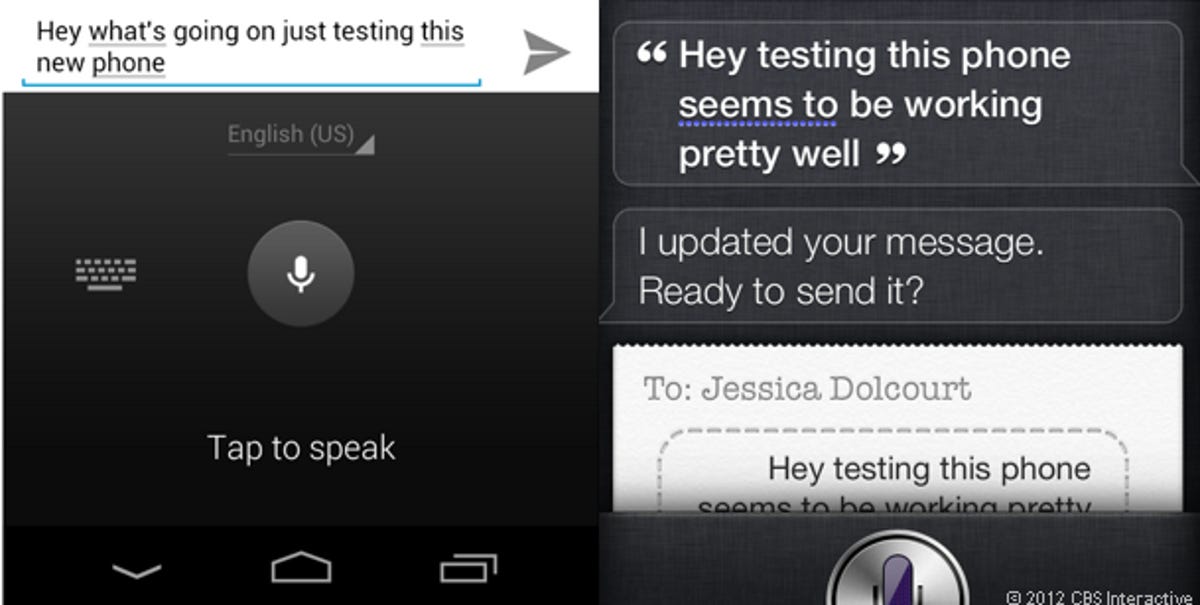

Brian Bennett/CNET
Using the iPhone 4S to send text messages using just our voices was a breeze as well. After Brian uttered, “Send text to Jessica Dolcourt,” Siri quickly prepared Brian’s message, then asked what he would like say. Brian spoke a quick sentence that the iPhone 4S transcribed without any hiccups. More importantly, Siri provided voice prompts and verbal descriptions of the actions it was conducting or about do. This makes for easy voice control without having to look at or even touch the screen.
Again Google Voice Actions was less accurate in terms of carrying out our wishes. The command to “Send text message to Jessica Dolcourt” correctly created our sample text in two out of three attempts. The function did, however, transcribe Brian’s spoken words into written characters error-free in every instance.
Unlike Siri, though, Google’s software didn’t tell us what it was doing at any stage of the texting process. All we got was a faint alert chime to indicate that the Galaxy Nexus was listening to us. Essentially you have to use the screen, which makes hands-free operation more limited.
3. Set an alarm
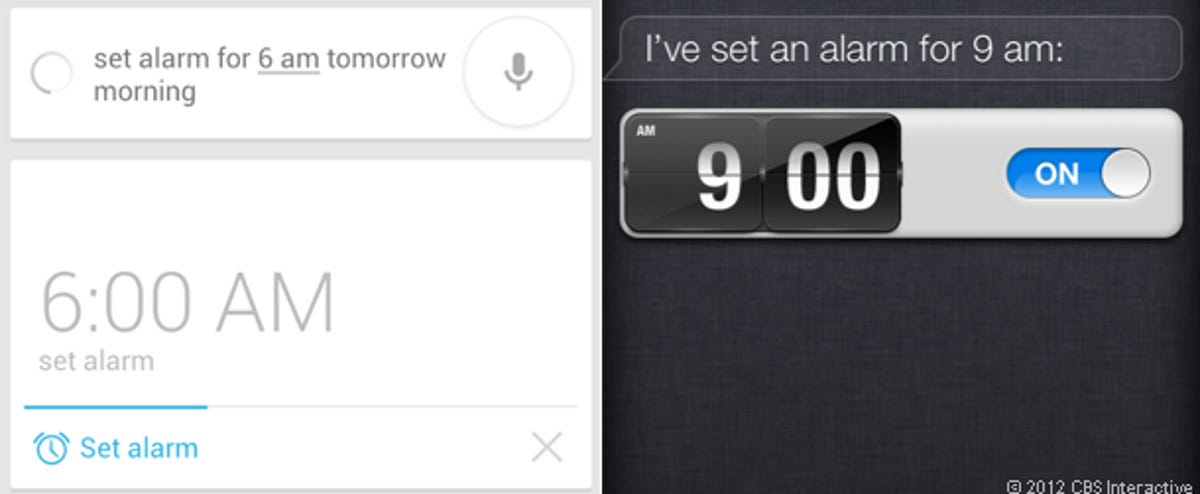

Brian Bennett/CNET
Telling the iPhone 4S to set an alarm for us wasn’t difficult either. When we said, “Schedule alarm for 6 a.m. tomorrow morning,” Siri knew what to do immediately. For some reason, Siri wouldn’t comply when we told it to repeat or edit that same alarm. It did delete the alarm when we asked to it to, though.
Jelly Bean handled our alarm clock just as well. When we spoke the same phrase, the Galaxy Nexus created a 6 a.m. alarm on the first try. We also commanded the phone to cross the alarm out without any trouble by telling it to “Delete this alarm.” Voice Actions on the Galaxy Nexus also balked when we tried to tell the device to repeat the alarm only during weekdays, something easily done from within the Android clock menu settings.
4. Get directions
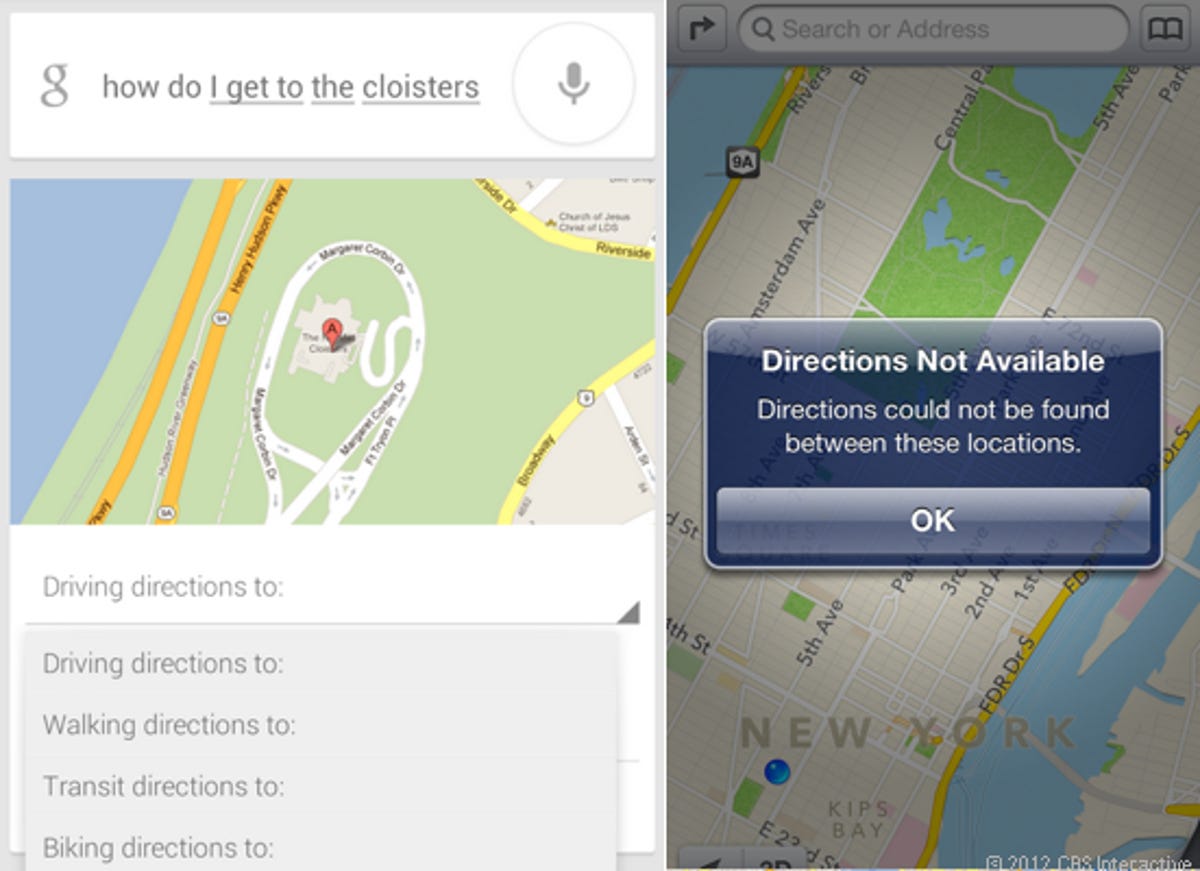

CNET
Asking Siri and Google Voice Actions for directions was equally useful. Both Apple’s personal assistant and Android Jelly Bean pulled up detailed instructions on how to drive, walk, and take public transportation to a particularly distant New York attraction. Even better, the competing technologies also immediately whisked us to their respective map applications.
iOS 6 now matches Android with turn-by-turn driving directions, but its mapping app is sorely lacking in some situations. For instance, iOS 5 maps, which uses Google Maps, easily found The Cloisters (pictured below); Apple’s native maps app in iOS 6 did not. While Siri works as well as Google Voice Actions in launching the right app, the quality is still in question.


Brian Bennett/CNET
5. Check the weather
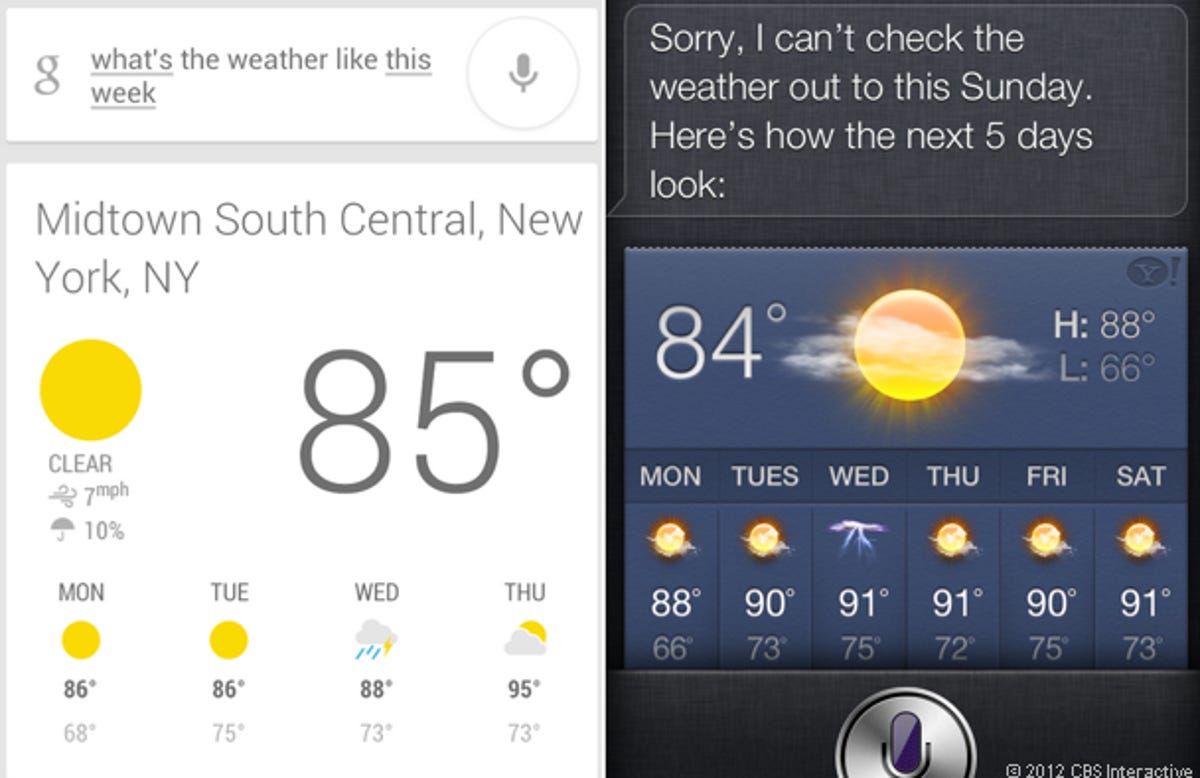

Brian Bennett/CNET
Thanks to flashy TV spots, you’ve likely heard all about Siri’s skill at looking up the weather. We can certainly attest that the Apple assistant flawlessly pulled up the day’s forecast. Siri will also display projected weather for the next five days when asked.
Google Voice Actions was able to match Siri’s prowess in retrieving the weather outlook. Just like the iPhone 4S, our Galaxy Nexus test unit correctly read back both daily and five-day forecasts when we asked it to. We also were treated to spoken confirmation that the phone had successfully completed our requests.
6. Play a tune
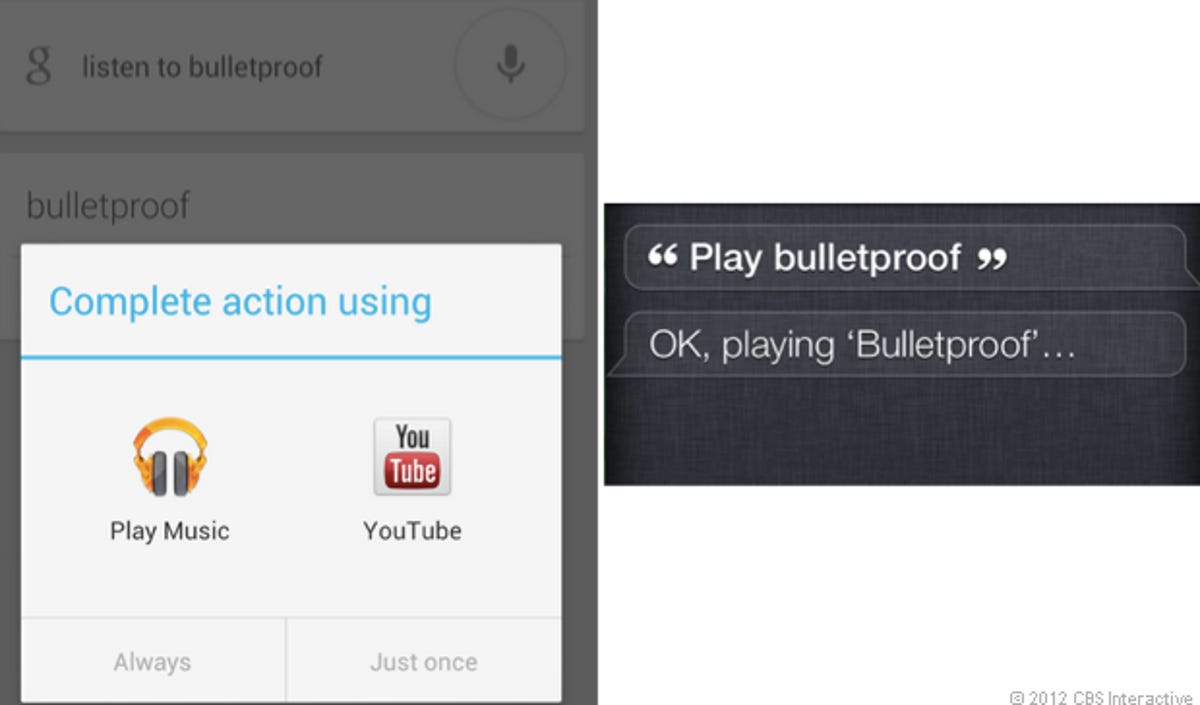

Screenshot by Jessica Dolcourt/CNET
Tell Siri to play a tune and you’ll get it with little hesitation. In fact, we had to work quickly to capture the screenshot before the iPhone 4S opened its music player. Google’s Voice Actions app took more coaxing, requiring the command “listen” rather than “play.” We liked the option to play in the music player or in YouTube, but it did take a second or two longer to open the app. We also liked being able to cancel the switch to the music player in case you really want the search links instead.
7. Dictate an e-mail


Jessica Dolcourt/CNET
If you fancy yourself a master orator, you’ll be glad to know that both Google Voice Actions and Siri are adept at taking e-mail and text message dictation. Google Voice Actions didn’t listen quite as attentively as Siri, and doesn’t look as slick when asking for your approval. However, it mostly kept up.
8. Search the Web


Jessica Dolcourt/CNET
Searching for links and images on the Web was straightforward with both voice recognition engines, and the two delivered identical images for sweet treats from Google’s database.
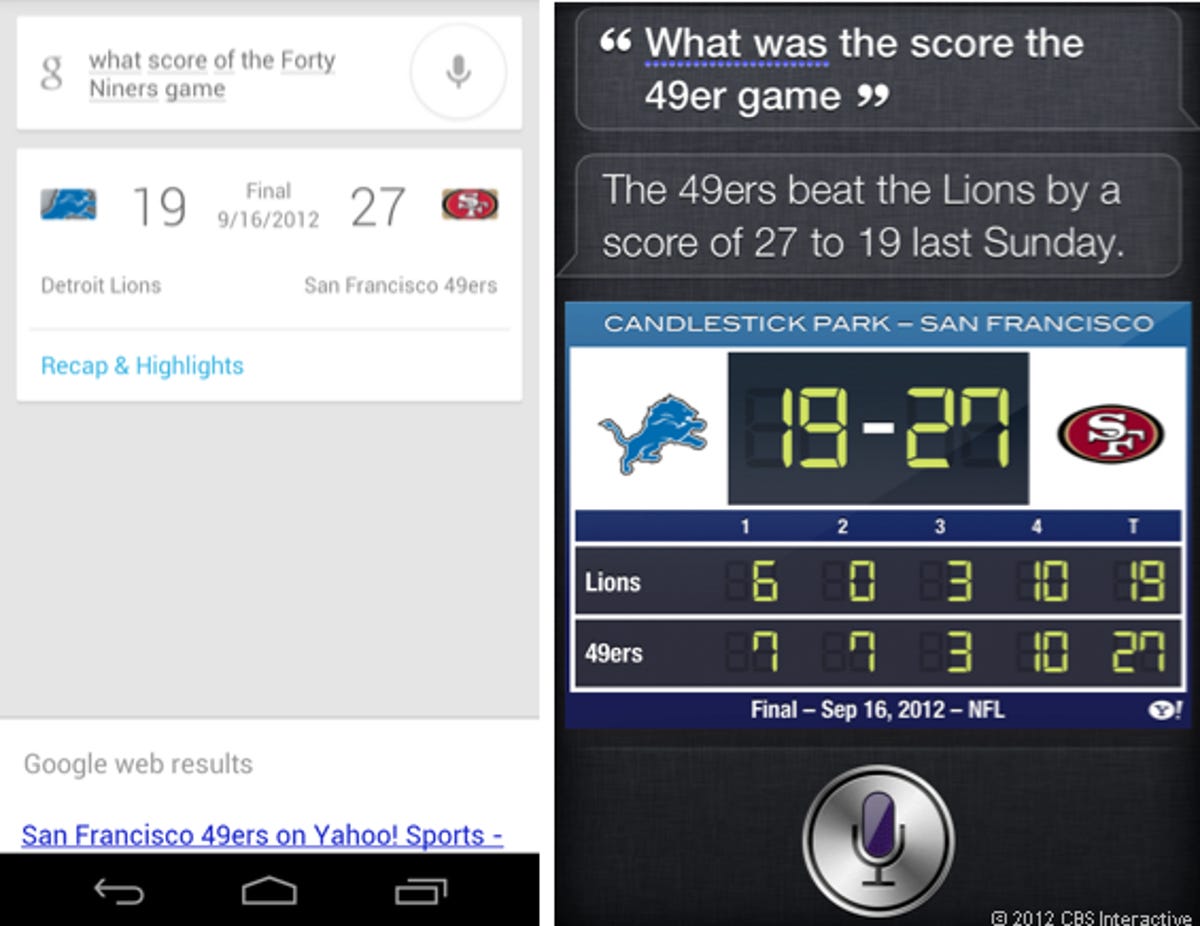

Jessica Dolcourt/CNET
Apple made a big to-do about adding sports scores and Yelp restaurant results as part of its prettily packaged experience, and this works as beautifully as Apple promises when you ask Siri directly for results. However, Google Voice Actions is also able to pull down scores. Though they don’t look nearly as polished or as extensive, they do float to the top of the results.
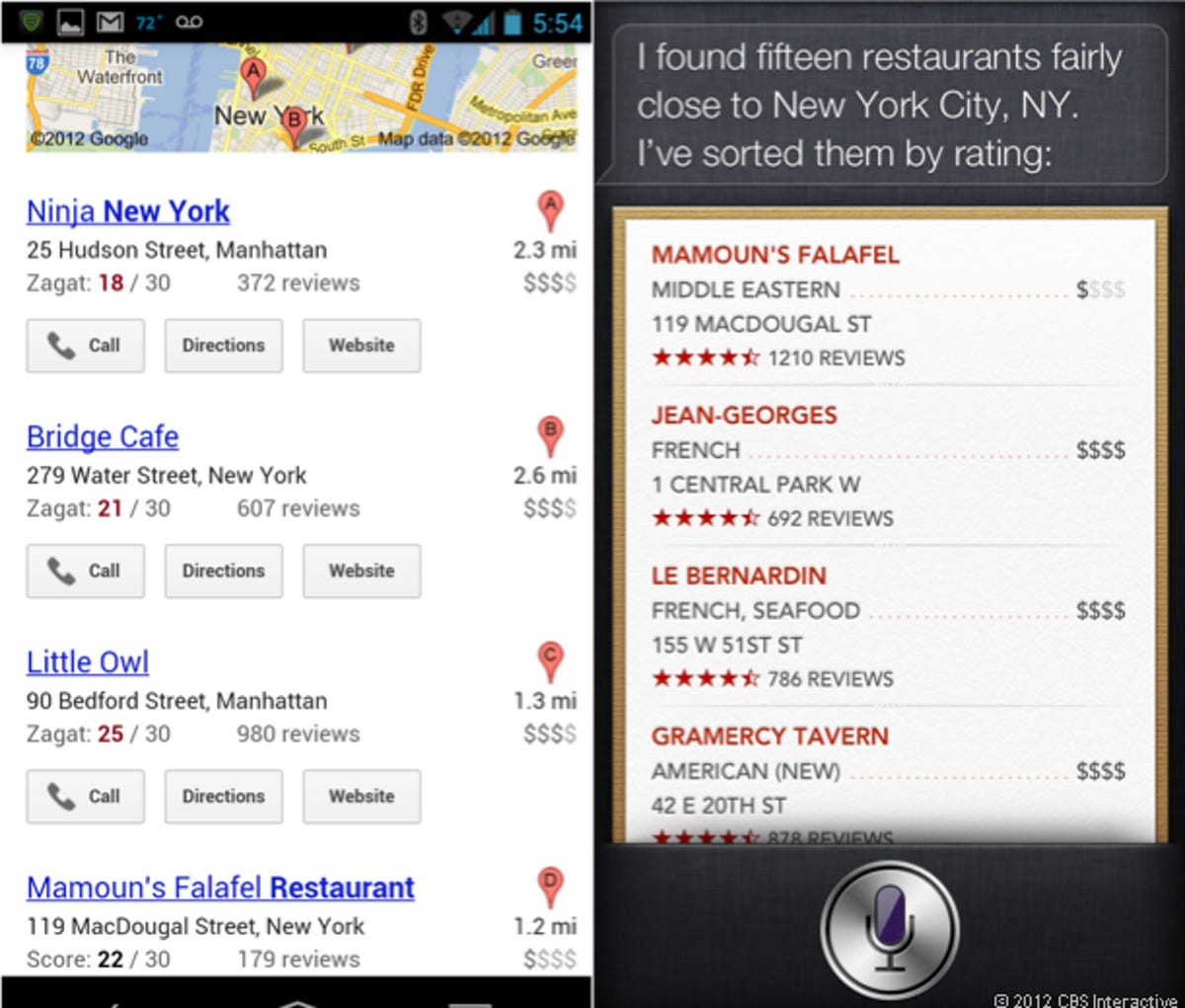

Jessica Dolcourt/CNET
Thanks to Google’s integration of Zagat ratings, it can also supply restaurants. However, results in Google Voice Actions are messier and less satisfying, and you have to scroll down past the promotional links and a map snippet before you see the first of the Zagat ratings. Siri, on the other hand, sorts by Yelp ratings in a cohesive list that’s easy on the eye.


Jessica Dolcourt/CNET
On the other hand, Siri faltered on two searches for a new permanent food truck spot in San Francisco. Siri on iOS 5 understood Jessica’s better, but didn’t deliver the information she needed to find information on the latest slice of foodie heaven. Google’s voice engine did; the third link directed her to the right place. Siri on iOS 6 didn’t solve the problem either. It returned 15 food trucks in the SOMA area, but didn’t know that I was looking for one spot that hosts rotating trucks.


Jessica Dolcourt/CNET
9. Launch a Web site
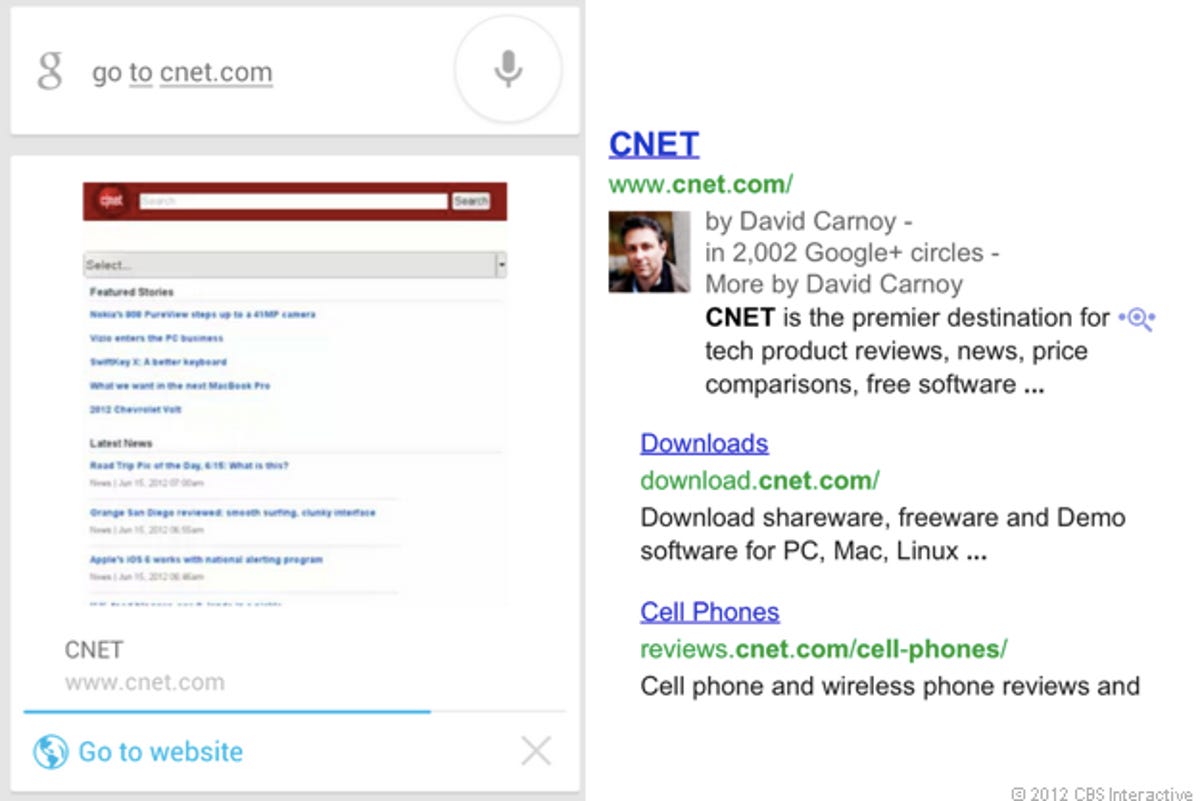

Jessica Dolcourt/CNET
In addition to searching, you can also launch a Web site with both. The command to open CNET.com worked more completely with Google’s Voice Actions, which delivered CNET.com as a link and loaded the site. Siri found CNET’s site without any incident, and opening it with a tap wouldn’t be a problem, but it does seem to take one more step in this test result.
10. Ask: How high is Mt. Whitney?
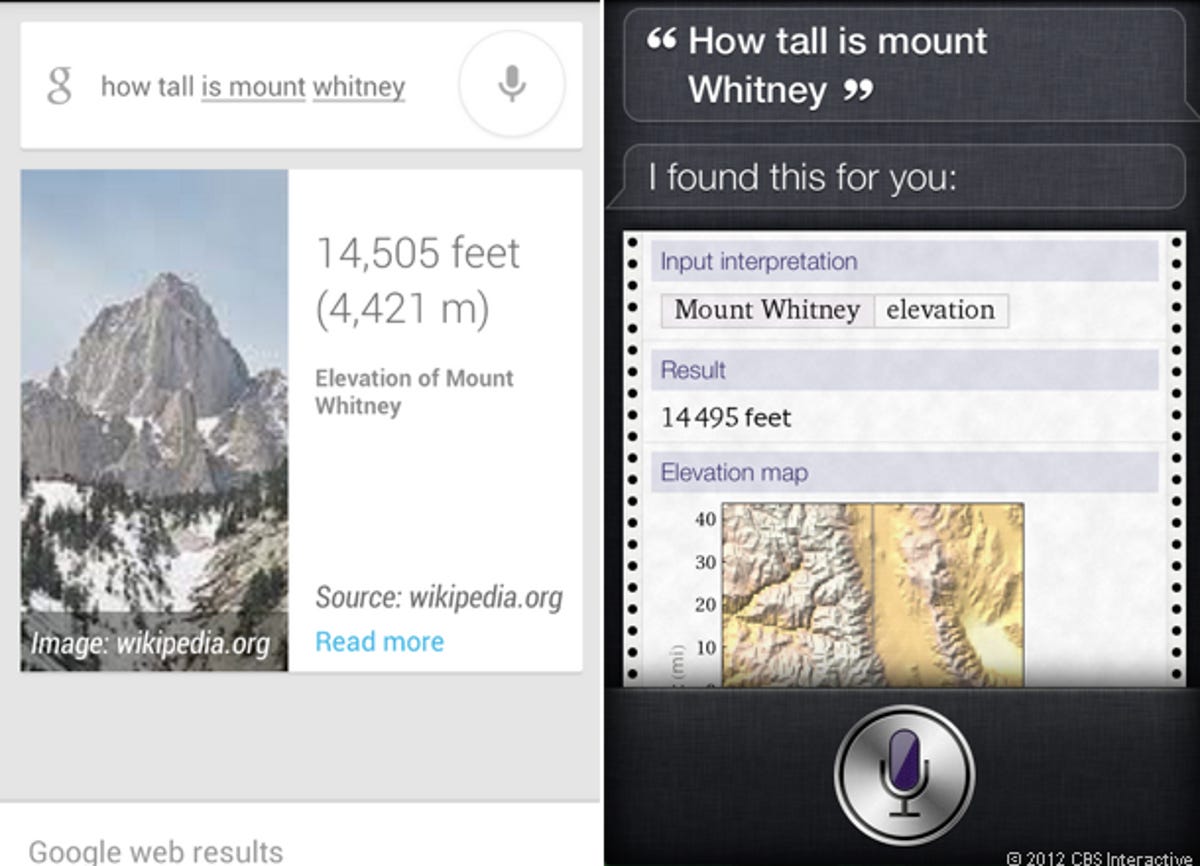

Jessica Dolcourt/CNET
Siri and Google Voice Actions returned similar information about California’s highest peak, so we call this one a draw.
11. Do the math
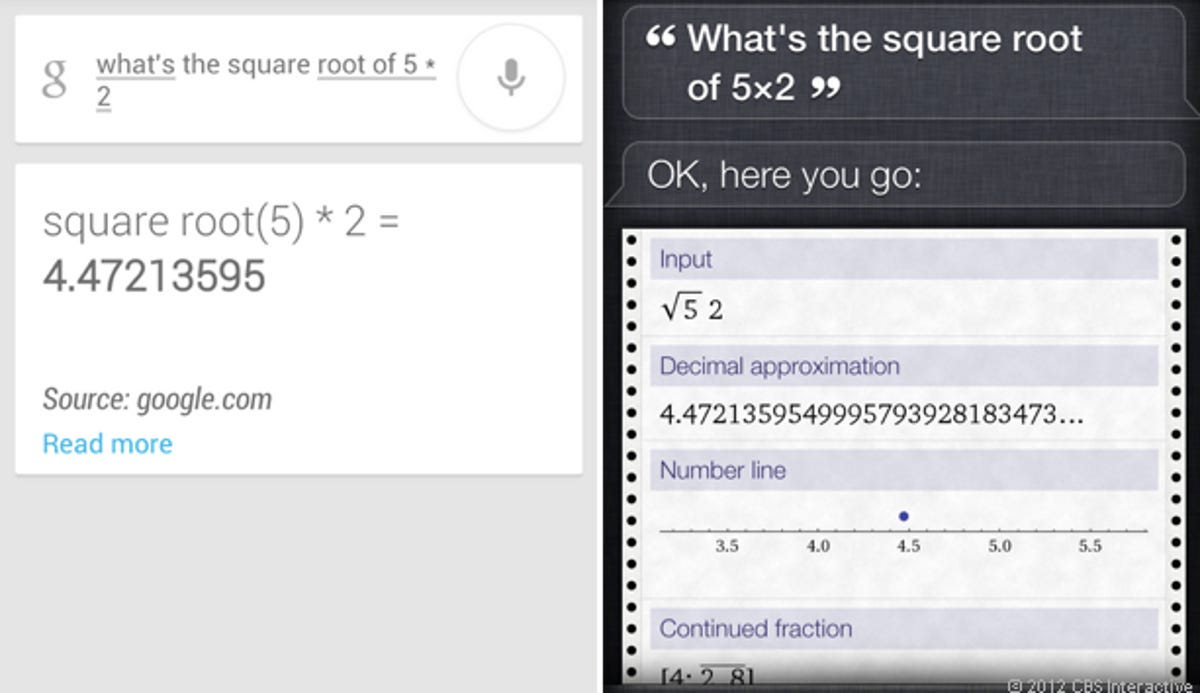

Jessica Dolcourt/CNET
Similarly, Google’s and Siri’s voice assistants both solved the test math problem, but Siri wins this round for its more stylish result, and for providing more context up front.
Which does more?
Google highlights several actions: dictate and send a text, e-mail, or note; listen to music; call a contact or a business (it searches for the business, then connects you;) navigate to a location; view a map; launch a Web site; or search.
Siri, on the other hand, has a deeper bag of tricks, like setting reminders and scheduling meetings. iOS 6 gives it the capability to launch apps and kick-start restaurant reservations through OpenTable. It also interacts with you in the same way consistently, helpfully reading out its successes (and failures) with its spoken voice. Google Voice Actions, however, speaks to you sometimes (weather forecasts), then merely lists text results on separate commands (text messages).


Screenshot by Jessica Dolcourt/CNET
Neither one of them can turn Wi-Fi or Bluetooth on and off, or launch apps (Samsung’s S Voice has the upper hand there,) but Google’s Voice Actions assistant at least recognizes the request and tells you, “Device features not yet supported.”
Our verdict
The way Siri and Android tackle voice commands says a lot about Apple and Google as a whole. In Siri, users have a simple but well-crafted and tightly controlled interface. Google’s Voice Actions’ feature on the other hand is very powerful, able to learn and adapt to your specific voice over time. Its umbrella is large and not quite elegant; it encompasses many different and often confusingly similar capabilities and services. For example, it’s unclear just where Google Now, Google Voice Search, and Google Voice Actions begin, end, or even overlap.
Additionally, Voice Actions was less accurate in interpreting our spoken requests than Siri. Of course this may change over time as the software gains a better grip on our specific diction and accent. Siri is a little smoother and slicker, but we like how Voice Actions shows you its intentions to launch something, but gives you the opportunity to cancel if that’s not what you wanted after all.
If we had to choose between the two today, Siri is the clear winner for its depth and polish, though Android’s Google Voice Actions matches closely in accuracy for the tasks it can also do.


Now playing:
Watch this:
Android 4.1 Jelly Bean a sweet Android update
3:32



